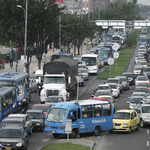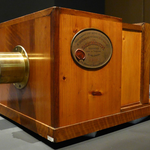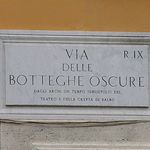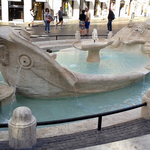Vittoriano
The monument put up in Rome to commemorate the first king Vittorio Emanuele II di Savoia (ilpadre della Patria), It stands out in the panorama of the city because of the white marble "botticino" used for its construction.
The work was inspired by the greek and roman temples and presents the most impressive example of the"Umbertian" style architecture that dominated in the last decades of the XIXth century.
Started in 1885 by Giuseppe Sacconi who won the international competition among 293 participants. The construction cost 30 million and it was finished with the exclusion of the decorative details in 1911.
The construction of it caused very serious damages to the ancient remains of the Capitolium and the destruction of several medieval buildings.It consists of wide steps flanked by allegoric groups.
On the first level of the stairs the Altar of the Fatherland, open in 1925, is placed. Here you can find the symbolic grave of an Unknown Soldier that the guard of honour of mounts days and nights.
It consists of wide steps flanked by allegoric groups. On the first level of the stairs the Altar of the Fatherland, open in 1925, is placed.
Here you can find the symbolic grave of an Unknown Soldier that the guard of honour of mounts days and nights.
The statue of Roman Goddess is on the top of the tomb and two high-relieves on the sides with Cortei del Lavoro (Work Procession) e dell'Amor Patrio (Love to the Fatherland) are created by A.Zanelli.
Above in the centre there is a big equestrian statue of 12 meters high to Vittorio Emanuele II, the work of Enrico Chiaradia and Emilio Gallori.
The huge quadrighas in bronze were placed here in 1927 and the internal decorations were finished in 1935.
A wide arcade either adorned by statues and relieves represent the Italian Regions. It crowns the heavy incoherent and discordant complex thanks to the white colour of the buildings and surrounding monuments.
Here the Institute of the History of the Italian Risorgimento is situated together with the Museo centrale del Risorgimento and the relevant historical archive.
Romans gave to the monument several names: la torta, il biancone The most famous and less reverent one la macchina da scrivere.

 The records of Rome. Big numbers, not always enviable, for a big city.
The records of Rome. Big numbers, not always enviable, for a big city. New Phot-O-Matic section. To spend some time looking at photos (also) of Rome.
New Phot-O-Matic section. To spend some time looking at photos (also) of Rome. The administrative, urban, toponymic and imaginative subdivisions of Rome.
The administrative, urban, toponymic and imaginative subdivisions of Rome. Notice for tourists: in Rome you drink for free. Historical fountains and 'big noses'.
Notice for tourists: in Rome you drink for free. Historical fountains and 'big noses'. Free museums return on the first Sunday of the month.
Free museums return on the first Sunday of the month.